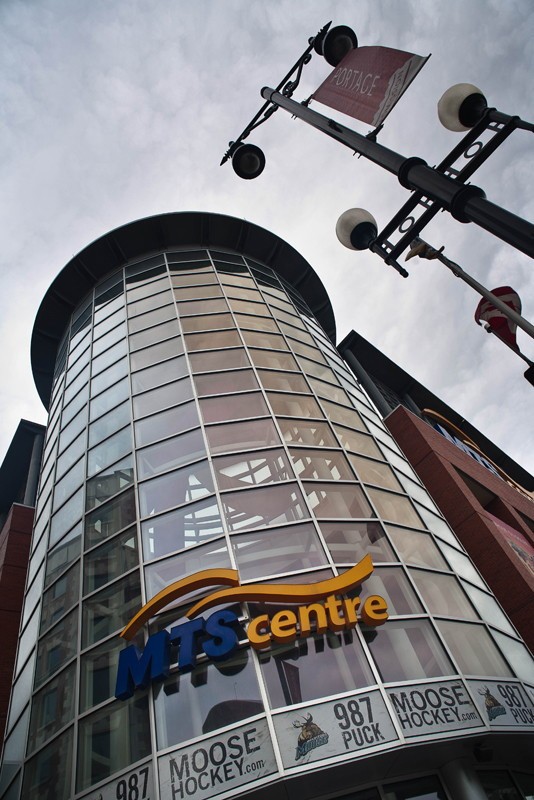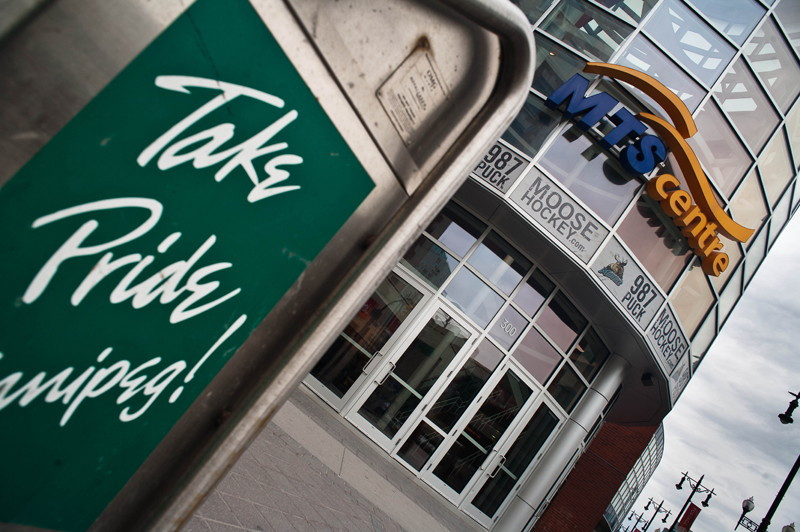Follow the leader
The MTS Centre is a contributor to downtown life, and other developments should follow suit
In an article in the latest issue of the Toronto magazine Spacing, sports writer Adam Proteau suggested that the MTS Centre is “probably the most urban-friendly sports complex in Canada.”
With Boston’s Fenway Park and Chicago’s Wrigley Field (built in 1912 and 1914, respectively) as obvious exceptions, Proteau is probably right. The MTS Centre stands on a relatively small block, in the middle of a relatively built up commercial centre.
Not just urban by virtue of being snug among its surroundings, it also possesses some basic architectural texture, has several active entrances, and a few commercial services oriented to the sidewalk public, making it a part of the neighbourhood even when no events are going on.
In contrast, most sports facilities in North America are monoliths built on vast swaths of land at the forgotten edges of downtown – usually former rail yards or industrial waterfronts.
Ostensibly, these facilities are built there to spur development opportunities in the surrounding neighbourhood, but, with few exceptions, they have had very limited results.
In the middle of what is still Winnipeg’s commercial centre, the MTS Centre acting as an agent of urban renewal would be a greater challenge.
Portage Avenue is fairly built up, and land assembly for further development is a costly and complicated process.
There are also existing myriad uses and users of the neighborhood, including a concentrated expression of the city’s poverty and social dysfunction, which congregates on and near Portage Avenue during the day and evening.
Still, this hasn’t stopped many people from imagining that NHL hockey will be the happy ending of downtown’s sad postwar saga.
Perhaps caught up in the ecstasy of a new NHL team, one local urban issues columnist trumpeted it will give the city the “renewed opportunity to transform our downtown and fully realize the potential of the MTS Centre as a catalyst for urban renewal.”
Hoping for the same thing, the city is planning to brand the blocks around the MTS Centre as a district for sports, entertainment and related service industries, and will also make it a tax-increment financing (TIF) zone.
Typically, the way TIF zones work is that any increase in the assessed value of the developed property goes toward developers in the area, thus creating a financial incentive for further development.
“ The blocks south of Portage Avenue need the strong residential population they enjoyed prior to the 1950s more than they need a hockey team the city enjoyed prior to 1996
In the case of Portage Avenue, however, tax increases will go toward public infrastructure projects such as new sidewalk benches, street lamps or a new “public square” on the Manitoba Public Insurance-owned parking lot behind the MTS Centre.
The NHL’s return will be a good opportunity for downtown, but in trying to make the neighbourhood just one thing, organic strengths that are already there can be cut off.
So, too, can the chance to allow other uses to flourish. The blocks south of Portage Avenue need the strong residential population they enjoyed prior to the 1950s more than they need a hockey team the city enjoyed prior to 1996.
The area around arenas built on the windswept edges of a city’s downtown can remain a parking lot wasteland, and while this may detract from the game day experience, it really doesn’t matter. Portage Avenue does not have that option: it is unavoidably the public face of Winnipeg, and the city cannot afford to ignore it outside of game days.
If the MTS Centre as a major league sports facility is going to uplift Portage Avenue, it will have to do so only as one component of a busy, mixed-use district.
The City of Winnipeg and other downtown organizations should seek quality over quantity when it comes to approving development plans downtown, and it should be more about asking what vitality these developments will add, rather than what blight they will remove.
Design, scale and complexity matter. There must be a good number of old buildings because they add not just character, but economic opportunities (there is a reason why the best bars and restaurants are found in old buildings).
There must also be a great number of buildings with small footprints rather than ones that take up entire blocks.
The MTS Centre is relatively urban and manages to be a contributor to downtown life because it is as compact as possible and interacts with the street.
Every other development, sports-related or not, should follow this same rule.
Robert Galston is a University of Winnipeg student who writes about urban issues. Visit his blog at http://riseandsprawl.tumblr.com.
Published in Volume 65, Number 27 of The Uniter (June 29, 2011)









